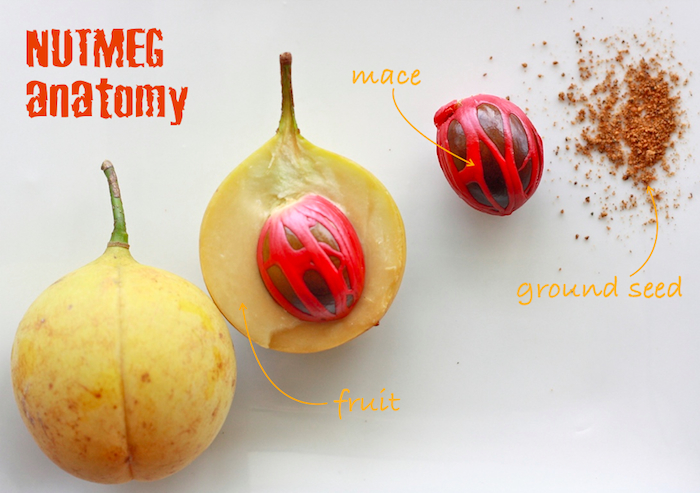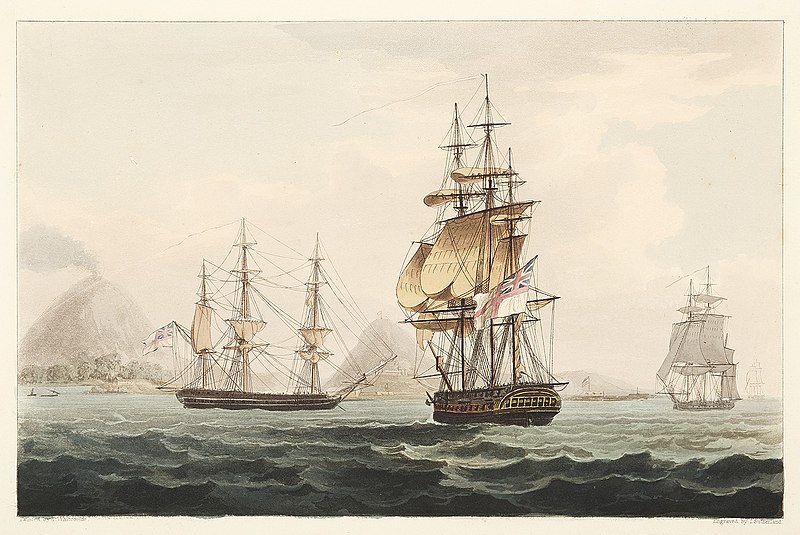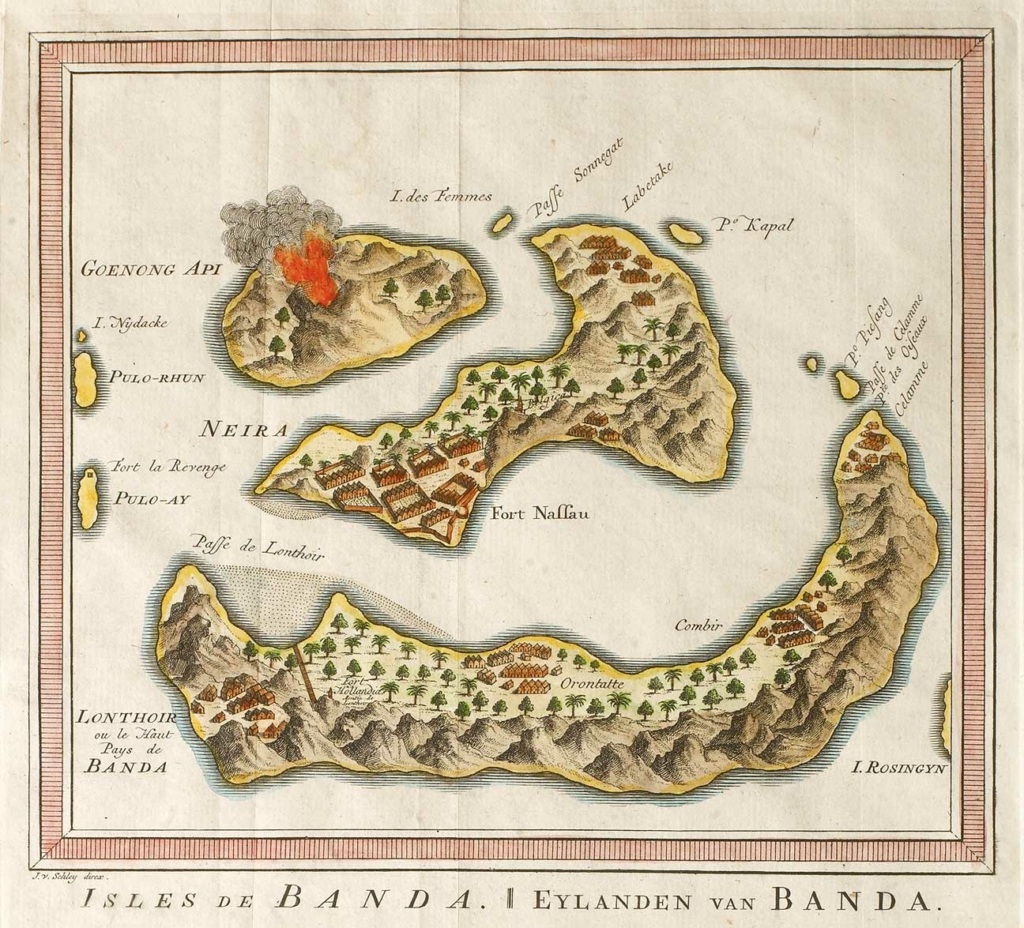The Banda Islands were once at the center of the world’s largest and most critical trade: spices. In the 17th century, it was those living in the Banda Islands who owned the monopoly on nutmeg. At the time, the spice was worth more by weight than gold, so the 1.5-ounce bottle you have in your kitchen would be worth $2,800.00 at today’s prices.
Nutmeg comes from the fruit of the Myristica fragrans tree. At first it only grew on nine tiny islands called the Banda Islands, located south of Ceram Sea. The Banda Islands occupy an area of only 5 miles by 20 miles of the Banda Sea near Indonesia. The largest island known as Lonthor or Banda, is only 7 miles long and 2 miles wide. The island could not grow enough crops to feed the natives, so they had to trade nutmeg for food, mostly nutritious sago palm, with the surrounding islands. This started a trade that eventually reached around the world.

The spice trade began in the Middle East more than 3,000 years ago, with Chinese, Arab and Malay traders bringing spices to Europe by Roman times.
Romans were instantly hooked by the heady and powerful spice. By the medieval times, nutmeg was a status symbol, much like BMW automobiles or Rolex watches are today – and they put it in everything. The recipes taste terrible to our modern tongues but at the time the idea was to impress the guests on how wealthy one was. The best of all- not only was the spice expensive but it was also considered mysterious. Over 3,500,000 pounds of nutmeg was imported just from Egypt a year but where did it come from? How did it grow? No one in medieval Europe knew!
The reason is simple: Arabian traders kept the source of this valuable spice their secret to maintain the monopoly and keep their prices high. This finally prompted European sailors to set out in search of this valuable spice once they had seaworthy ships. Christopher Columbus was trying to find a route to the Spice Islands when he discovered the Americas instead.
The Banda Islands were finally discovered by the Portuguese, in 1512 and quickly built trading centers to monopolize on the spice. The profits on these voyages were 10 to 100 times the initial cost in the islands. Many of the ships were so stuffed to the brim with nutmeg that they sank in the first storm.

Capture of the Island Banda
Sutherland, Thomas; Whitcombe, Thomas. Capture of the Banda Island, January 1, 1817. National Maritime Museum. https://www.rmg.co.uk/collections/objects/rmgc-object-109944
It was also not unusual on the 6000-mile voyage to lose over half of the sailors who started out on a trip from scurvy, malnutrition, and jumping ship – but losing any of the precious spice was a travesty.

A seventeenth century illustrated map from a French expedition to the remote Banda Island.
Early in the 17th century, the newly formed Dutch East India Company threw out the Portuguese, which led to England and the Netherlands fighting over the islands, causing them to change hands several times. The Second Anglo-Dutch War lasted two years, from 1665 to 1667, with a joint loss of 52 ships. Over 12,000 men lost their lives fighting over the spice islands and trade routes. Finally, on July 31, 1667, an incredible deal was struck. England officially swapped two of the small Banda islands for a swampy Dutch colony once known as New Amsterdam, now New York City. How perverse that the center for trade in the ancient world was traded for the center of trade in the modern world
Unlike the medieval times, bold nutmeg is used today in only a few foods including pumpkin pie spice, Ras el Hanout, and eggnog. A little nutmeg goes a long way, so be sure to measure carefully. Check out some of these nutmeg-forward recipes.
*Bernstein, William J. A Splendid Exchange. How Trade Shaped the World. (New York: Atlantic Monthly Press 2008)
The Consumption of Spices and Their Costs in Late-Medieval and Early-Modern Europe: Luxuries or Necessities? https://www.economics.utoronto.ca/munro5/SPICES1.htm